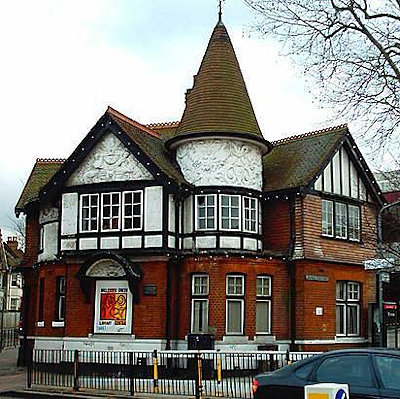
Like us on Facebook
PLACE NAMES


 
|
|
Willesden
|

|
|
|
Willesden is an area in north west London which forms part of the London Borough of Brent. It is situated 5 miles (8 km) northwest of Charing Cross. It was historically a parish in the county of Middlesex, that was incorporated as the Municipal Borough of Willesden in 1933 and has formed part of Greater London since 1965.
With its close vicinity to affluent neighbourhoods Brondesbury Park, Queen's Park and Kensal Rise, the area surrounding Willesden Green station has seen increased gentrification in the past several years, with rapidly rising property prices. The Daily Telegraph called Willesden Green one of London's "new middle class" areas. The area had a population of 44,295 in 2011 including the Willesden Green, Dollis Hill and Dudden Hill wards.
The name derives from the Anglo-Saxon Willesdune, meaning the Hill of the Spring, and a settlement bearing this name dates back to 939 AD. The Domesday Book of 1086 records it as Wellesdone. However, on 19th century maps of the town such as those from the 'Ordnance Survey First Series', the town is shown as Wilsdon. The motto of Willesden Borough Council was Laborare est orare ("to labour is to pray").
The parish of Willesden remained predominantly rural up until 1875, when its population was 18,500. It included the villages and hamlets of Brondesbury, Dollis Hill, Dudden Hill, Harlesden, Kilburn, Mapesbury, Oxgate and Stonebridge. However, this changed with the opening of the Metropolitan Railway (later the Metropolitan line) station of Willesden Green on 24 November 1879. By 1906 the population had grown to 140,000, a phenomenon of rapid growth that was to be repeated in the 1920s in neighbouring areas such as Harrow. The Metropolitan line service was withdrawn in 1940, when the station was served by the Bakerloo line, and later the Jubilee line.
World War I caused Willesden to change from a predominantly middle class suburb to a working class part of London. After the war, Willesden grew rapidly as many factories opened up with numerous flats and houses. The local council encouraged building to prevent large unemployment and decline. To the present day, Willesden has been shaped by the patterns of migration which marks it out as one of the most diverse areas in the United Kingdom. City of London Corporation records show that the first black person recorded in Brent was Sarah Eco, who was christened in St. Mary’s Church in Willesden on 15 September 1723. The 1901 United Kingdom census recorded that 42% of the population was born in London. In 1923, the specialist coach builder Freestone and Webb established their base in Willesden, producing bespoke cars on Rolls-Royce and Bentley chassis until 1956.
Willesden became a municipal borough in 1933, and it is at this time that the area became predominantly working class. A small Irish community had formed in Willesden by this time, which grew rapidly during the period of the Second World War. A small Jewish community of refugees from Europe also formed during the war, with 3.5% of the population in 1951 born in Germany, Poland, Russia or Austria. During the war, Willesden suffered large damage due to the heavy concentration of industry, such as munition factories, and railways in the area.
Willesden Junction is a Network Rail station in Harlesden, north-west London, UK. It is served by both London Overground and the Bakerloo line of the London Underground. There are no longer any platforms on the West Coast Main Line, which is separated from the low-level station by the approach road to Willesden Depot which lies immediately south-east of the station.
|
 Feel free to Email me any additions or corrections Feel free to Email me any additions or corrections
LINKS AVAILABLE TO YOUR SITE
| |





